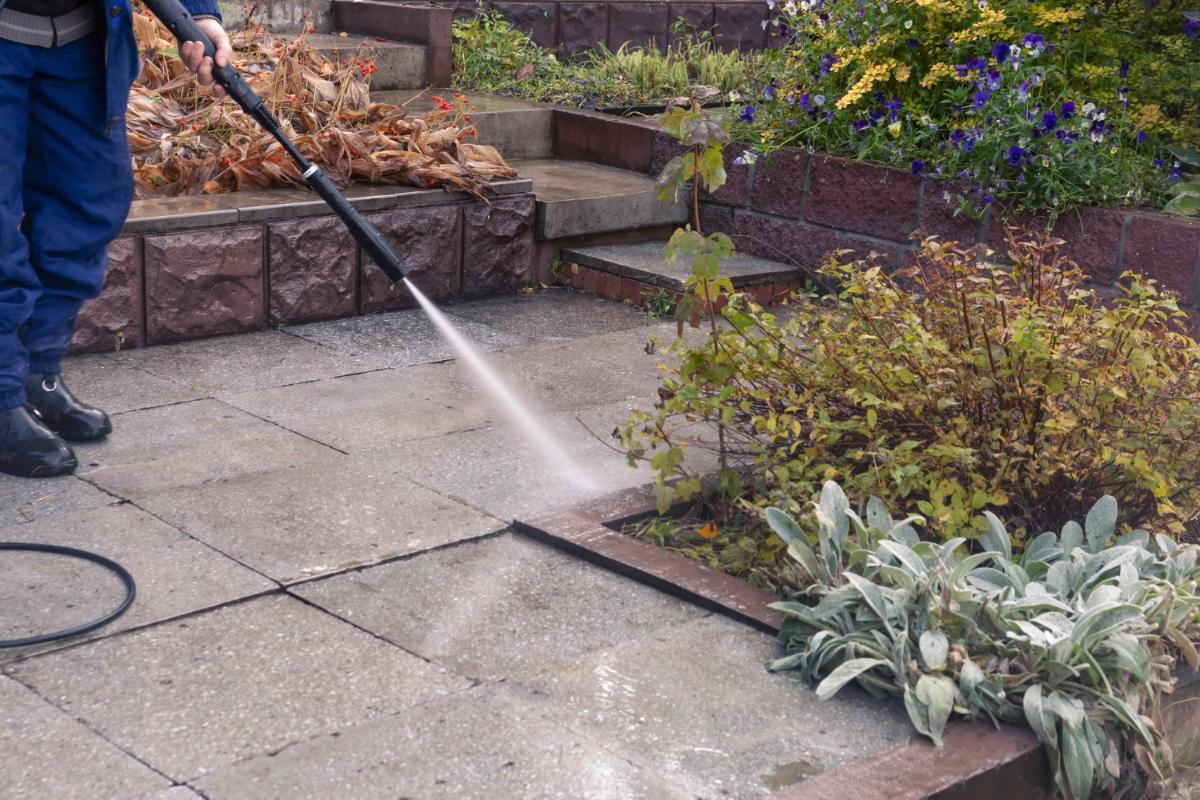
There are a great many misconceptions out there about pressure washing, some of them dangerous. So, our experts on pressure washing in Orlando, FL, offer these costly misconceptions about the service.
This is true to some extent, but you can easily induce damage to yourself and your house if you are not careful. We don't advise anybody to pressure wash from a ladder. This is extremely dangerous and should be left to a professional. Washing vinyl siding from the ground with high pressure at upward angles forces water behind the siding, rendering water damage. Getting up high and away from your house will allow you to wash the siding at a flatter angle. You can only do this with the proper equipment. Another thing, even small consumer-grade pressure washing units provide too much pressure to clean vinyl, asphalt shingles, and pressure-treated wood. The right equipment permits you to reduce the pressure, so you're not generating damage.
That is not true at all. Only contractors with inferior cleaners must depend on high pressure to accomplish the job. High pressure can cause a lot of damage to your house. Too much pressure forces water behind your house siding, causing mildew and mold problems. Wood is more delicate than you might think, and too much pressure to clean a deck can cut wood and leave ugly marks and scars that show through the sealer. Using too much pressure on asphalt shingles is a massive mistake. Shingles have little pieces of grit on them, comparable to sand, called granules. Excessive force can blow these granules off the shingles, reducing the longevity of your roof. Make sure to use contractor-grade cleaners and the lowest possible pressure.
Quality contractors employ only environmentally safe products that will not hurt your pets. But plants are more susceptible and need to be protected. For example, if a cleaner is permitted to dry on the leaves of a plant, it can cause burn spots. Protecting plants with plastic is an alternative, but that can also be detrimental to the plants on a hot day. A better option is to wet your plants down with water before, during, and after the cleaning operation. As long as cleaners are not permitted to dry on your plants, there should be no harm.
That is not necessarily true. Ugly black stains or streaks on asphalt shingles are caused by a robust type of algae called Gloeocapsa Magma. This kind of algae thrives in moist and warm climates and usually appears first on the North slope of a roof where shade is dominant, and moisture accumulates. The algae feed on the crushed limestone used in asphalt shingles. Rain then distributes the algae down the roof, generating black streaks. As the algae break down the shingles, the granules that defend the shingle are slackened and begin to fall off. This forces the roof to deteriorate and reduces its ability to reflect sun rays. If left unaddressed, the algae will decrease the life of your roof, reduce your home's curb appeal, and boost your home cooling expense. This roof algae can be eradicated and removed to repair the appearance of your roof. But the proper cleaners and low pressure is a must to prevent damage to the roof.